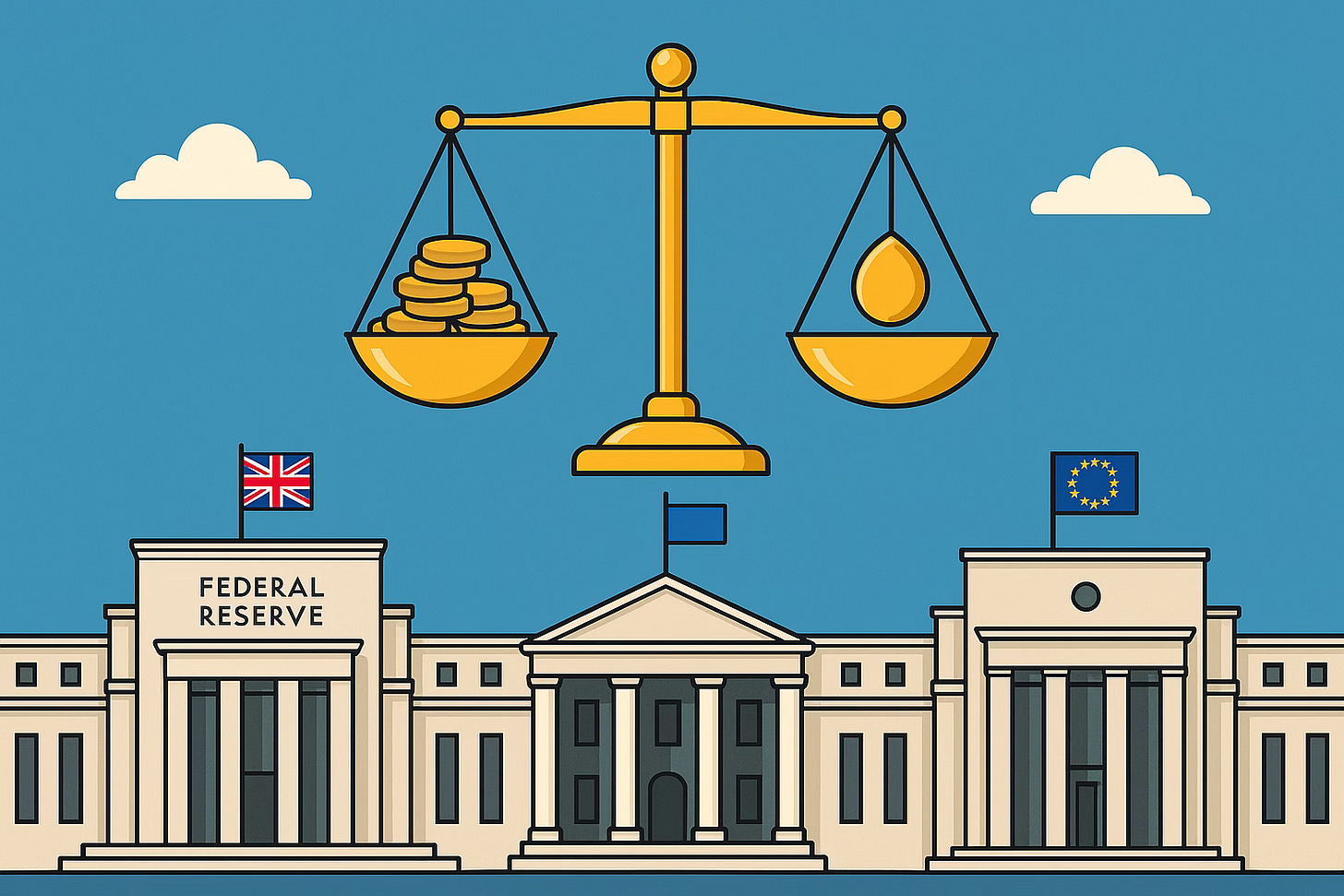After the Fed Cut: What’s Next for Quantitative Tightening in the U.S. and Abroad
Global central banks diverge on QT as liquidity pressures mount.
The Federal Reserve’s first rate cut in nine months has shifted the spotlight back onto the other half of its monetary policy toolkit: quantitative tightening (QT). While the Fed trims its benchmark rate to support growth, it continues to reduce the size of its balance sheet—draining liquidity from the financial system.
Globally, other central banks are facing the same balancing act. The Bank of England (BoE) signaled this week it may slow the pace of QT, while the European Central Bank (ECB) continues to let maturing bonds roll off quietly. The question now is whether the Fed will follow suit, or press ahead with shrinking its $7.5 trillion balance sheet even as it eases rates.
📊 Where QT Stands in the U.S.
Balance Sheet Runoff: Since 2022, the Fed has reduced its holdings of Treasuries and mortgage-backed securities by over $1.4 trillion.
Monthly Caps: The Fed has been allowing up to $60B Treasuries and $35B MBS to mature without reinvestment each month.
Liquidity Effects: The spike in repo facility borrowing ($18.5B last week) highlights how QT has tightened short-term funding markets.
While Powell emphasized that rate cuts and balance sheet runoff are “separate tools,” market stress suggests QT may need to be recalibrated if liquidity strains worsen.
🌍 Abroad: A Mixed Approach
Bank of England: Policymakers are expected to slow QT, citing fragile gilt markets and fiscal uncertainty in the UK. The BoE may reduce bond sales rather than halt them outright.
European Central Bank: The ECB continues its “passive QT,” allowing bonds to roll off naturally. Officials stress the process is less disruptive in the eurozone given excess liquidity from years of stimulus.
Bank of Japan: Still effectively in QE mode, but gradually testing bond market tolerance for less intervention.
Emerging Markets: Many EM central banks are navigating imported liquidity shifts, as Fed easing and QT simultaneously create volatile capital flows.
⚖️ The Dilemma
The Fed’s policy mix is increasingly contradictory:
Rate Cuts = Adding Liquidity
QT = Draining Liquidity
This raises a central question: Can the Fed stimulate with one hand while tightening with the other? For now, Powell insists QT will continue “in the background,” but traders are skeptical.
🔮 What Investors Should Watch
Repo Facility Usage: Persistent spikes may force the Fed to slow or stop QT sooner than planned.
Bond Market Stress: If Treasury yields stay volatile during heavy issuance, QT could add to instability.
Global Synchronization: If the BoE or ECB slow QT while the Fed continues, it could pressure the dollar and redirect global liquidity flows.
Election-Year Politics: The Trump administration may push for both lower rates and easier liquidity—creating political risk for QT’s future.
✅ Investor Takeaways
Liquidity Premiums Rising: Funding stress highlights the value of cash and short-duration assets.
Bond Market Opportunities: Slower QT abroad may ease pressure on gilts and bunds, while U.S. Treasuries remain more volatile.
Equity Outlook: Rate cuts help stocks, but QT limits the upside by tightening background liquidity.
Gold and Commodities: Dollar weakness plus global easing may support hard assets, especially if QT slows.
📌 Final Word
The Fed’s decision to cut rates doesn’t mean the liquidity squeeze is over. With balance sheet runoff continuing and other central banks reconsidering their own QT programs, global markets are navigating a split-screen world—easier policy rates on one side, but shrinking liquidity on the other.
How long the Fed can maintain this balancing act will shape the next phase of the global market cycle.


This is BS, and they know it. When Pedo Peter was president they were cutting with "great" all though fake job numbers, and inflation was double what it is now. A quarter point with tightening is negative for rates; they will go up. And a quarter point will do nothing to force banks to lend.